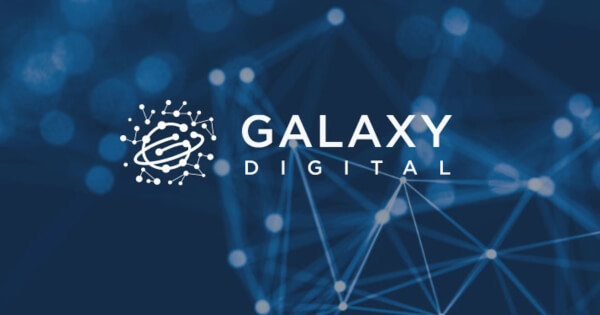Solana ETF, MiCA Framework, and Ethereum's Reth Client Highlight Weekly Top Stories
Jessie A Ellis Jun 30, 2024 02:10
Key highlights include VanEck's Solana ETF filing, MiCA framework in the EU, and the release of Ethereum's production-ready Reth execution client.

This week, significant developments in the cryptocurrency space include VanEck's filing for a Solana (SOL) ETF, the European Union’s MiCA framework set to take effect, and the release of Ethereum’s first production-ready Reth execution client, according to Galaxy.
Solana Trades Higher on ETF Application
VanEck has filed an S-1 with the SEC to launch a spot-Solana exchange-traded product (ETP), marking a significant move in the crypto ETF space. The proposed trust aims to track the price of Solana (SOL) by holding the underlying cryptocurrency. Despite the filing, operational details such as custodian and sponsor fee remain unspecified. Notably, the trust will not engage in staking its assets. Following the announcement, SOL traded approximately 8% higher.
VanEck's filing includes several risk disclosures, such as concentrated ownership of Solana and potential network risks. However, the SEC has yet to start the official review clock for this application. Bloomberg’s James Seyffart indicated that assuming the 19b-4 filing is imminent, the SEC’s final decision could be expected around March 2025.
Given the SEC's stance on Solana as an unregistered security, the approval of this application appears unlikely without significant regulatory changes. The precedent for SEC approval of spot-crypto ETPs involves a multi-step process, including the launch of regulated futures and spot-based ETPs, which Solana has yet to fulfill.
MiCA’s New Rules to Take Effect in EU
The European Union’s Markets in Crypto Assets (MiCA) framework is set to take effect on June 30. This landmark legislation will impose new regulatory requirements on crypto businesses, particularly affecting stablecoin issuers. Under Article 23, companies must cease issuing stablecoins used for more than 1 million transactions or exceeding a daily value of 200 million euros.
The framework also mandates e-money licenses for stablecoin issuers to operate legally in the EU. However, industry participants, including leaders like Circle and Tether, have yet to obtain these licenses. The European Banking Authority (EBA) has recently published guidelines on technical standards, but the regulatory landscape remains unclear. Exchanges such as OKX and Bitstamp have preemptively delisted Tether's EURT stablecoin, while Binance plans to restrict unauthorized stablecoins for European users starting next week.
Despite the regulatory challenges, MiCA aims to provide clarity and foster a more predictable business environment. The framework's partial applicability begins on Monday, with full compliance required by the end of the year.
Paradigm Unveils First Production Ready Release of Reth
On June 26, Paradigm announced the first production-ready release of Reth, an Ethereum execution client written in Rust. After two years of development, Reth is now available for node operators at scale, offering faster sync times and reduced storage requirements compared to existing clients.
Reth's performance metrics include a 50-hour sync time from genesis and a storage footprint of approximately 2.25TB for an archive node. The next major release will focus on enhancing usability for optimistic rollups and implementing changes for Ethereum's upcoming upgrade, Pectra.
Reth is the newest among the five actively maintained Ethereum execution clients. While it is the least widely adopted, its unique optimizations and rapid feature adoption position it well for future growth. However, the fast-paced development also increases the risk of potential bugs and misuse.
Charts of the Week
Ethereum’s Beacon Chain has seen a significant increase in validators waiting in the entry queue due to high demand for staking. The daily backlog has ranged between 4,000 to 5,500 validators over the past month. The churn limit, which controls the number of validators entering or exiting the set daily, currently allows 1,800 validators to leave the queue per day, resulting in a wait time of two to three days.
Other News
- State Street partners with Galaxy to launch ETFs.
- Marathon Digital expands into altcoin mining to diversify revenue streams post-Bitcoin halving.
- Julian Assange goes free after a plea deal with the US government and receives a $500k Bitcoin donation.
- Coinbase sues SEC and FDIC over FOIA requests, alleging federal regulators are attempting to cut out crypto.
- Bitcoin Virtual Machine team rolls out ZK rollups service to scale Bitcoin.
- Wallets allegedly linked to the US government move 3,940 bitcoins to Coinbase.
- Blast Foundation to disperse 17 billion BLAST tokens in this week’s airdrop.
- Solana Foundation releases Blinks feature to embed Solana functionality into other web and social apps.
- USDT stablecoin supply on the TON blockchain crosses 500 million.
- Bybit Card becomes available on Apple Pay.
- Following a presidential debate, Trump’s odds of winning surge to 67% on blockchain-powered prediction market PolyMarket.
- Supreme Court ends the practice of in-house administrative tribunals at SEC and other federal regulators.
.jpg)
